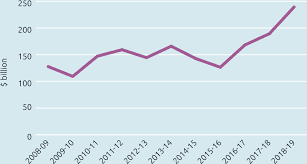In today's rapidly evolving world, innovation is the key to staying ahead of the curve. As someone constantly seeking inspiration for creativity and forward thinking, I recently came across an ingenious concept that not only fascinated me but also sparked a newfound drive for innovation in my professional life: vertical farming.
Exploring Vertical Farming:
Vertical farming represents a revolutionary approach to agriculture, challenging traditional farming methods by growing crops indoors, stacked vertically in controlled environments. This innovative technique utilizes advanced technologies such as hydroponics, aeroponics, and LED lighting to optimize plant growth while minimizing space and resource usage.
The benefits of vertical farming are manifold and extend far beyond conventional agriculture. Firstly, it allows for year-round crop production, independent of external environmental conditions, thus ensuring a consistent and reliable food supply. Moreover, by reducing the need for vast expanses of land and minimizing water usage, vertical farming presents a sustainable solution to global food security challenges.
Inspiration for Innovation:
The concept of vertical farming inspired me to rethink conventional approaches in my professional endeavors. Just as vertical farming revolutionized agriculture by challenging norms and embracing cutting-edge technologies, I realized the importance of thinking outside the box and embracing innovation in my work.
Applying Innovation in the Workplace:
Drawing parallels between vertical farming and my workplace, I began exploring innovative solutions to streamline processes, enhance efficiency, and drive positive change. Whether it's adopting new technologies, reimagining workflow structures, or fostering a culture of creativity and collaboration, I've embraced a mindset of continuous innovation to propel my team and organization forward.
Embracing Challenges as Opportunities:
Like any innovative endeavor, vertical farming faces its share of challenges, from initial setup costs to optimizing crop yields. Similarly, in the workplace, innovation often requires overcoming obstacles and embracing failure as a stepping stone to success. By viewing challenges as opportunities for growth and learning, I've cultivated a resilient attitude towards innovation, allowing me to persevere and achieve breakthroughs in my professional journey.
Conclusion:
In conclusion, vertical farming serves as a powerful symbol of innovation, demonstrating the transformative impact of forward-thinking approaches in addressing complex global challenges. By drawing inspiration from this revolutionary concept, I've embraced a mindset of innovation in my work, driving positive change and paving the way for a brighter, more innovative future.
Whether it's cultivating fresh ideas, fostering collaboration, or embracing challenges as opportunities, vertical farming has empowered me to think creatively and push the boundaries of what's possible in my professional endeavors. As we continue to navigate an ever-changing landscape, let us draw inspiration from innovative concepts like vertical farming to fuel our passion for innovation and drive positive change in the world.
Links:
https://www.youtube.com/watch?v=JhyjjNDXKuc&t=2s
https://www.canva.com/design/DAGC7P69pww/P41xW3FLIh11m84e8EnZ_Q/edit?utm_content=DAGC7P69pww&utm_campaign=designshare&utm_medium=link2&utm_source=sharebutton











